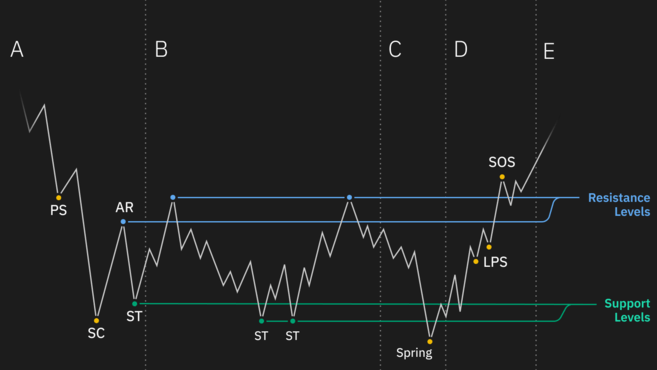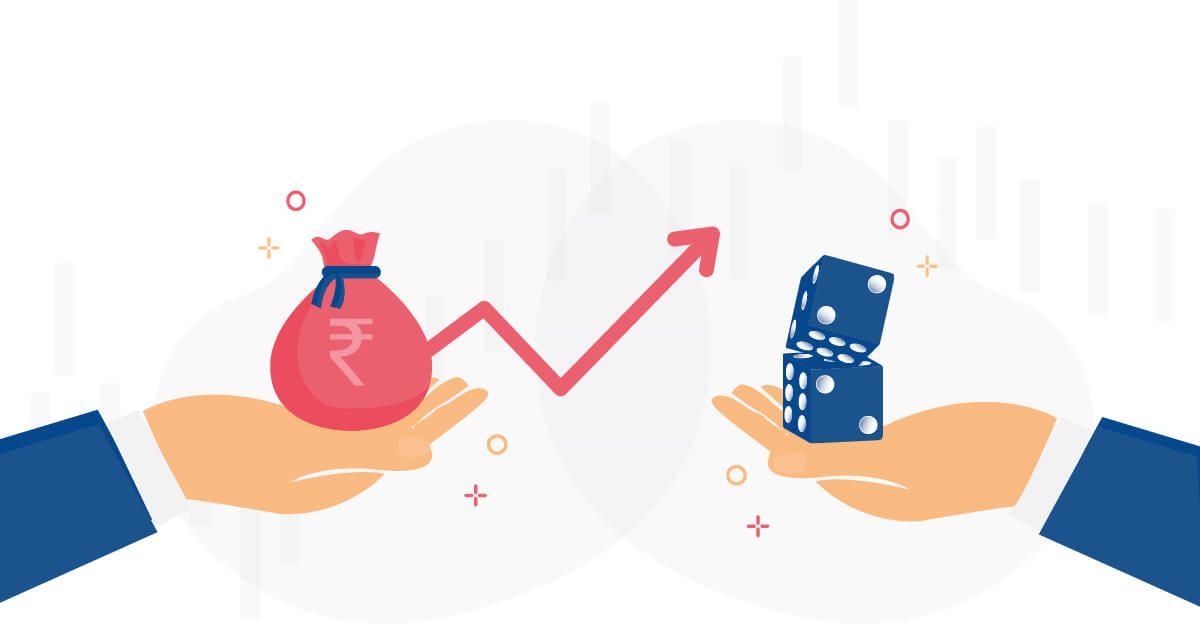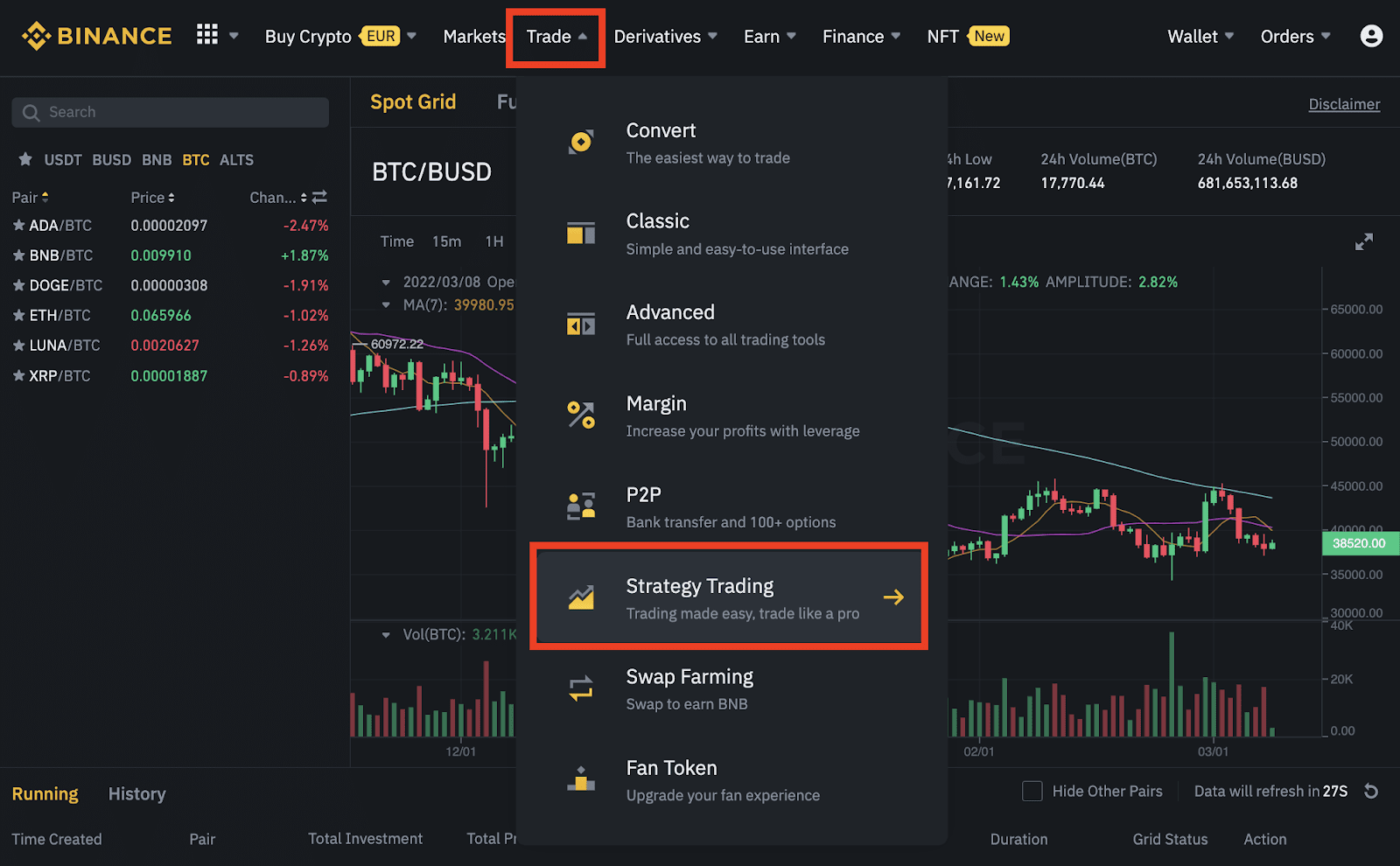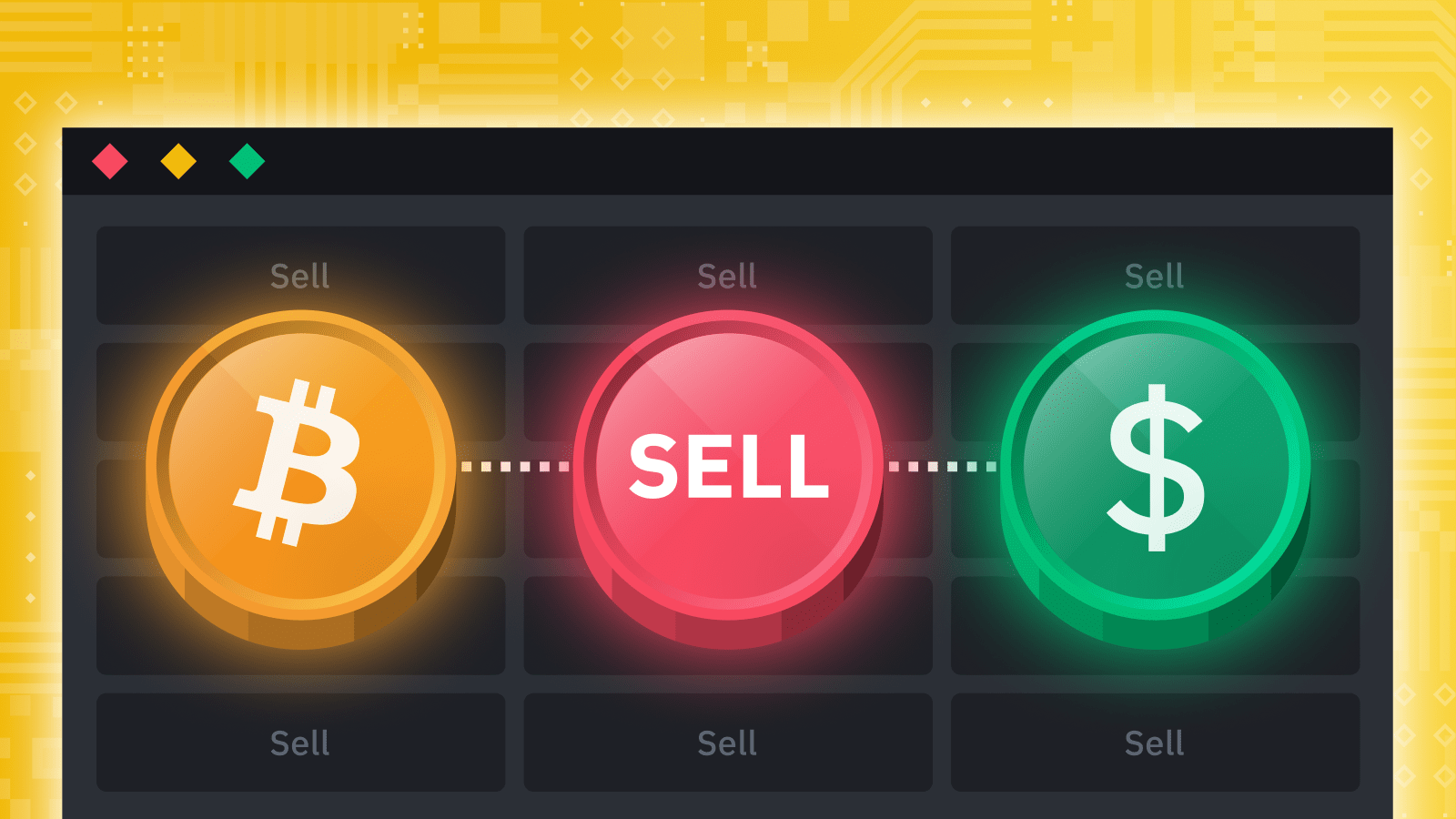Who is Wyckoff?
Richard Demille Wyckoff (1873-1934) is one of the pioneers of the stock market with technical analysis in the early 20th century. In 1888, he began working as an order agent for a brokerage firm in New York. And at the age of 25, he founded his own brokerage firm. He was the founder, author, and editor of The Wall Street Journal.
What is the Wyckoff Method?
The Wyckoff method is a set of trading rules, principles and strategies designed to help users assess the overall market, find potentially profitable stocks and set trading goals. His work includes the following:
-
Three fundamental laws;
- Wyckoff Price Cycle;
- Wyckoff’s Schematics;
- The concept of “Composite man”;
-
A five-step approach to the market.
>>> Read more: Binance Futures and Binance Margin Trading Guide 2022
3 Rules of the Wyckoff Method
The law of supply and demand
This is the central principle of the Wyckoff method. When demand is greater than supply, price increases, vice versa. Based on this rule, investors can study the balance between supply and demand by comparing respective prices and trading volumes.
The law of cause and effect
The law sets price targets by assessing the potential effects of a particular trend. According to Wyckoff, a period of distribution (cause) will eventually lead to a downtrend (effect). On the contrary, a period of accumulation (cause) eventually leads to an uptrend (effect)..
The Law of Effort and Result
The rule gives a warning about the possibility of a trend change in the near future. The difference between price and volume is one of the important signals that the trend may stop or reverse. If the asset price moves in a direction consistent with volume, the trend is more likely to continue. Market trends can stop or change direction if there is a significant difference between trading volume and asset prices.
Wyckoff Price Cycle
The price cycle is described from the moment you enter a buy position at the end of the uptrend preparation period (the end of the accumulation phase) and from the moment you enter a short position at the end of the downtrend preparation phase. The price cycle consists of four phases.
Accumulation
The “composite man” of the market begin to accumulate assets. Large amounts of assets are deposited slowly to the market so that the price does not fluctuate greatly. During the accumulation phase, the market tends to stagnate.
Uptrend
After the accumulation phase, the uptrend phase begins. After holding a sufficient amount of the commodity and the selling force decreased, the buyers quickly increased the price and a new trend was emerged. A bull market will encourage investors to buy shares, which will push demand and prices will rise.
Distribution
Once the demand to buy shares is satisfied, profitable investors begin allocating their assets to latecomers by selling shares to make a profit. This period is also cleverly managed by the “composite man” so that the price does not fall too quickly and the market is quite stable.
Downtrend
The “composite man” began to sell more shares, pushing the market lower as more investors sold shares, supply exceeded demand and prices fell. At the end of the bearish phase, the market continues its cycle in a new accumulation phase.
Wyckoff’s Schematics
Wyckoff chart in accumulation phase

Phase A: Represents a deceleration of the previous downtrend. Here, supply still exceeds demand. However, the supply is weak. This is evidenced by the introduction of PS and SC.
Phase B: This is the stage where the “cause” is formed by the law of cause and effect of the Wyckoff method. During this period, major market forces begin to hoard undervalued stocks to catch new uptrends. Accumulation can take a long time.
Phase C: This phase runs a key test (spring) that helps investors determine if their stock’s price is ready to rise. According to the Wyckoff method, spring success offers investors the opportunity to trade with potential success. A small amount of spring indicates that the stock price start to rise. This is a good time for investors to place buy orders.
Phase D: Indicates when the price breaks the resistance of the TR area and starts a new uptrend. During this phase, a pullback, BU, or LPS usually occurs before the SOS forms. These are good spots to place more potential buy orders.
Phase E: This is the period when the price TR is highest and the demand is greater than the supply. However, new higher TRs can occur at any time during this period, but they are usually shorter (same accumulation time as above). This new move is considered as the starting point for the bull run.
Wyckoff chart in the Distribution period

Phase A: The market starts to stabilize due to lower demand. The Preliminary Supply (PSY) isn’t strong enough to stem the upside, but it does show selling force. After that, high buying pressure formed the Buying Climax (BC). This is often caused by inexperienced traders and buying on impulse.
Phase B: Distribution acts as the consolidation zone (cause) before a downtrend (Effect). During this phase, the composite man sells the property gradually to meet market demand and reduce demand.
Phase C: In some cases, after the integration phase, the market appears as a final bull trap called the UTAD, or Upthrust After Distribution. It’s basically the opposite of a Accumulation Spring.
Phase D: A mirror image of the accumulation phase. The Last Point of Supply (LPSY)(LPSY) is usually in the middle of the range and has a lower peak in the chart. From this point, a new LPSY will be created around or below the support zone. A Sign of Weakness (SOW) occurs when the market is below the support line.
Phase E: Massive overwhelming supply make break below the trading range that marks the beginning of a downtrend.
The concept of “Composite man”
“Composite man” are wealthy individuals and institutional investors that have a significant impact on the market, such as banks, investment firms, lenders, and other financial institutions. According to Wyckoff, all market movements and stock movements are the result of complex human influences. They try to manipulate the market and buy low and sell high.
Once investors understand the market well and participate in the field similar to composite man, the operation strategy of composite man will bring high profits to investors. Through regular research and practice, investors can understand the dynamics of composite men from the price behavior shown on the chart.
Wyckoff’s five-step approach
Step 1: Determine trend
By examining the relationship between market structure, supply, and demand, investors can identify present patterns and forecast future price changes. You can evaluate future trends and consider whether to enter the industry or not.
Step 2: Invest in trend-oriented stocks
Selecting stocks whose prices have increased in comparison to the market, or alternatively, versus the market index. These are stocks that continue to increase while the market adapts or remain highly profitable when the market recovers.
Step 3: Choose stocks with at least a “Cause” of your price target
According to Wyckoff’s method, the price goal is determined by how long the accumulation/distribution period is (if the market is sideways). According to the law of cause and effect, the P&F number represents a “multiplier” and the subsequent stage of price movement is both short-term and short-term “results” when it travels horizontally in a trading range on the point and figure chart. enduring business.
Step 4: Determe the mobility of prices
This step is to assess if the price is out of the TR trading range and ready to rise after accumulation or distribution. Evaluate price volatility.
Step 5: Determine the time to enter
Wyckoff Markets thinks that investors only need to enter the market if the factors of each stock reach 3/4 or more. Furthermore, the specific principles of the Wyckoff test and the manifestation of price behavior in the TR trading range help investors determine the appropriate entry, stop loss and take profit points.
Conclusion
Richard D. Wyckoff provided a systematic approach to market trends so that investors and traders can make more logical decisions and increase chances of success. Although each method has its exceptions, the Wyckoff method has been applied for a long time, experienced market fluctuations and still enjoyed the trust of investors.
>>> Learn more about Binance: How to register and verify Binance account update 2022

















